
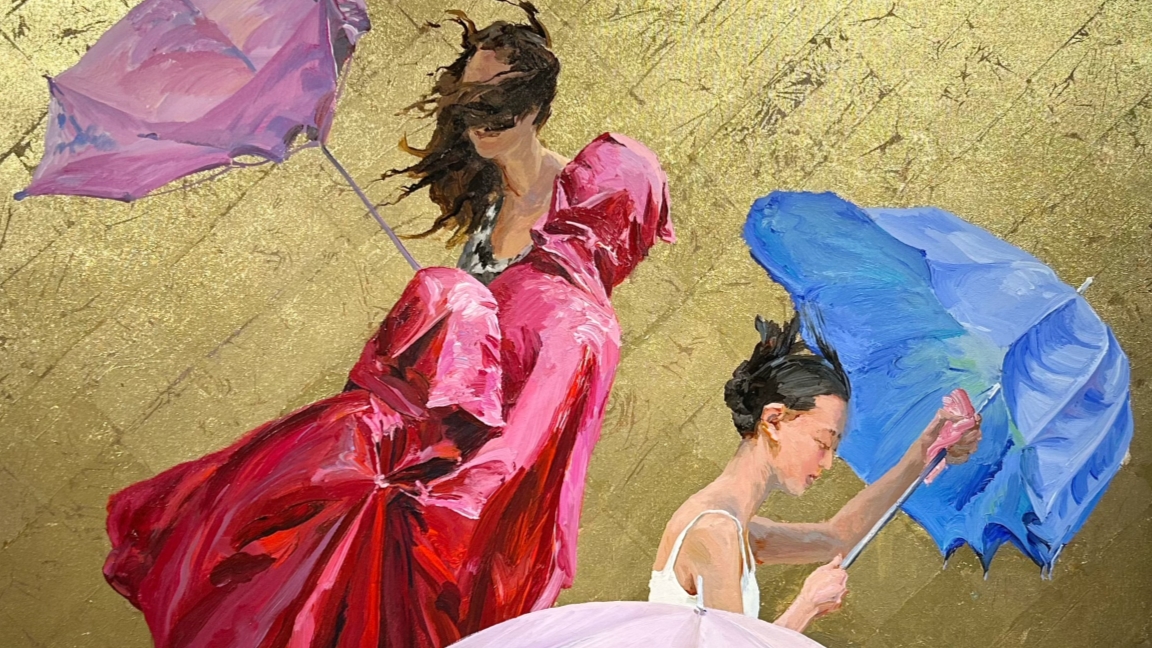
Women Artists from China and Spain Shape 'Ballad of the Ouroboros'
The Cervantes Institute and Shanghai Jiushi Art Museum are collaborating on "Ballad of Ouroboros – A Sino-Spanish Female Perspective Towards Art and Collection."
This exhibition features 45 women artists from China and Spain from major private collections led by women in both countries.
Ouroboros, an ancient serpent symbol that devours its tail in an eternal cycle, is the exhibition's centerpiece. The exhibition represents transformation and interconnectedness.
Snakes symbolize wisdom, introspection and rebirth in Chinese culture. This symbol begins the exhibition's exploration of "creation and destruction" as interwoven, cyclical and harmonious forces.
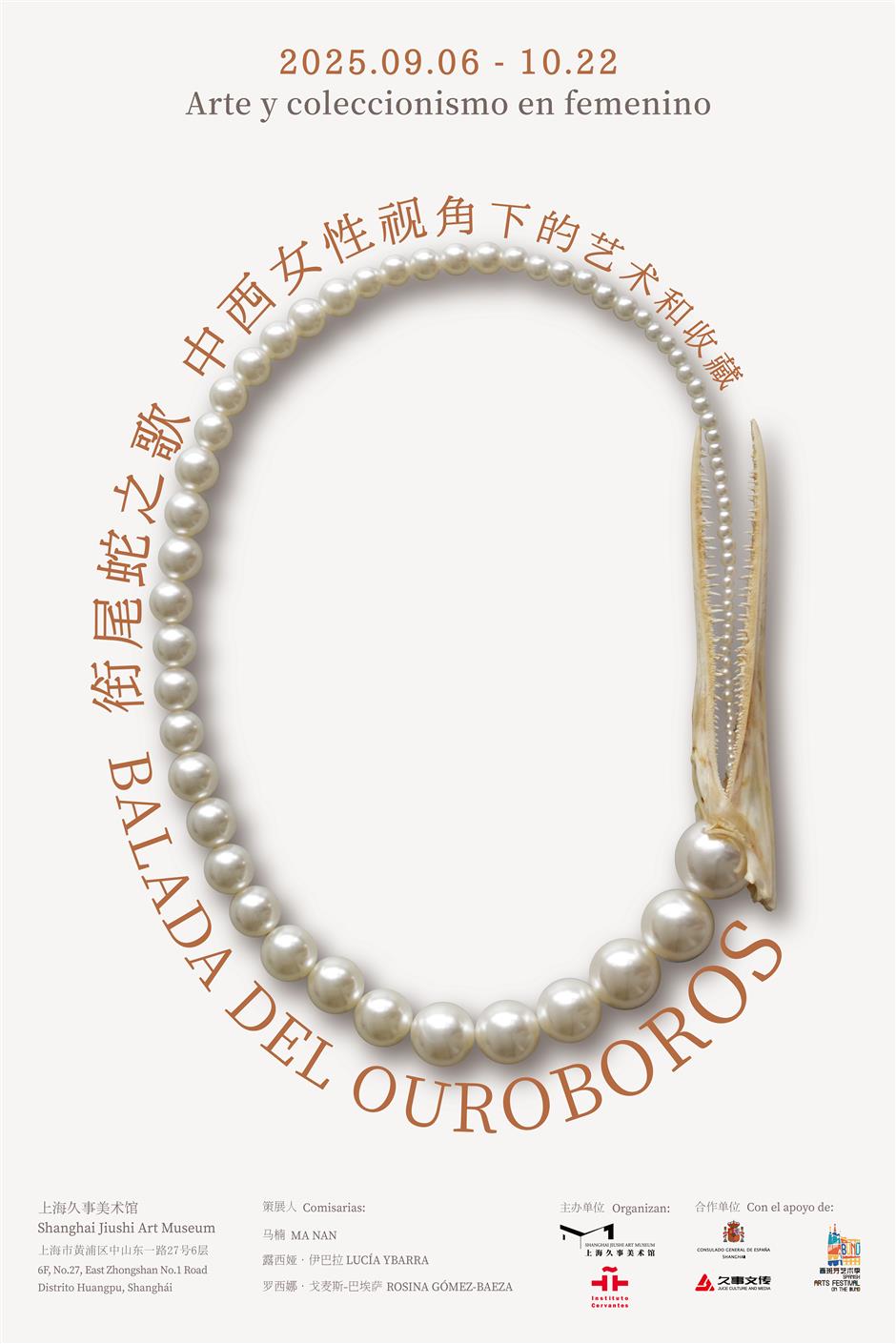
The theme encourages reflection on identity, the body and gender, spatial narratives, tradition and memory. Women in contemporary art curate private collections of painting, video art, mixed media and installations.
The exhibition questions simple, straight-line stories and promotes a circular view of time centered on healing, balance and diversity through women's perspectives.
By connecting artistic creation and collecting practices, the exhibition underscores the crucial role of art in sustaining cultural memory, enabling renewal and transmitting shared knowledge, while also highlighting the distinctive value and lasting impact of women's perspectives in today's cultural discourse.
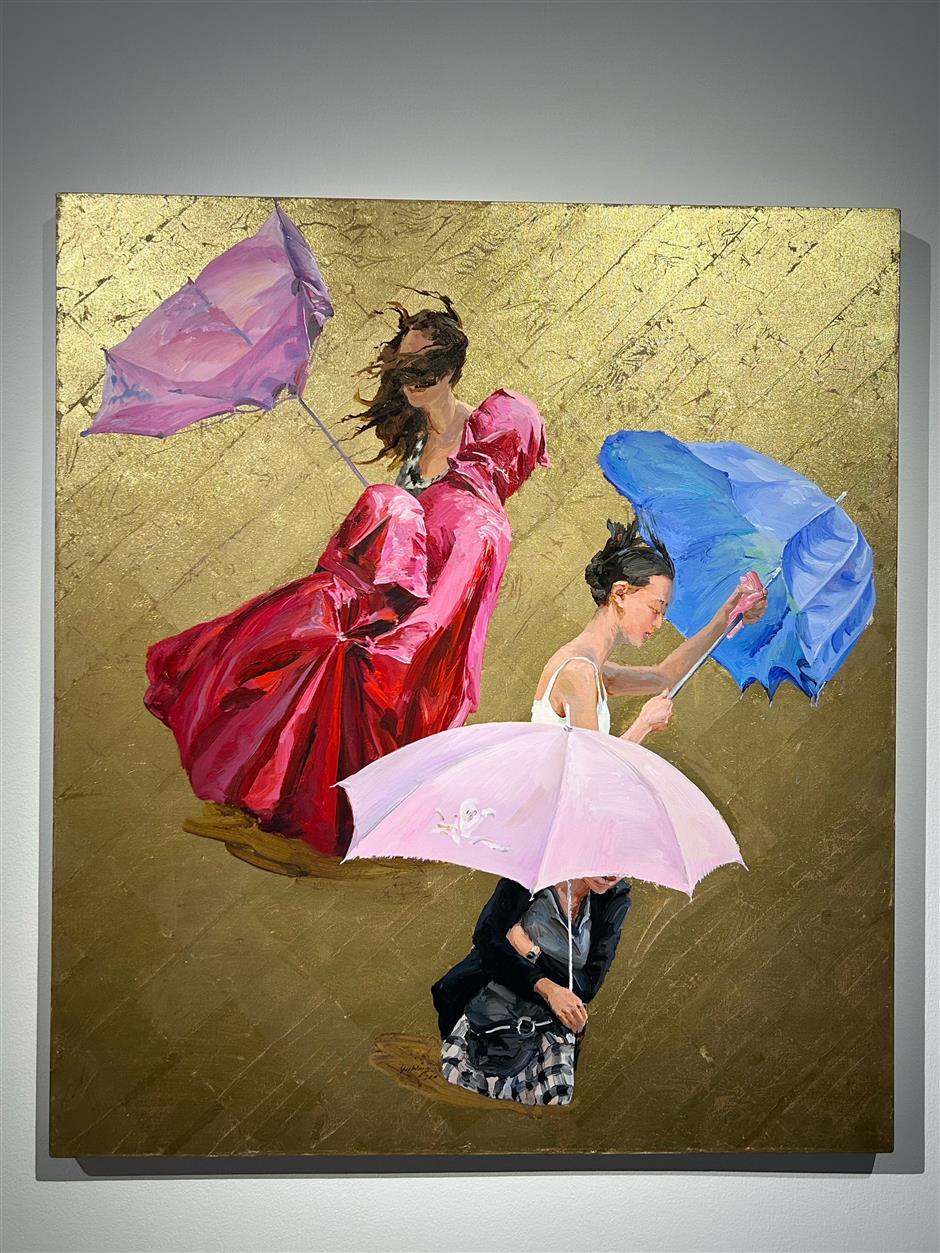
"Wind and Rain" by Yu Hong, gold leaf, acrylic on fabric, 2011. From a private collection.
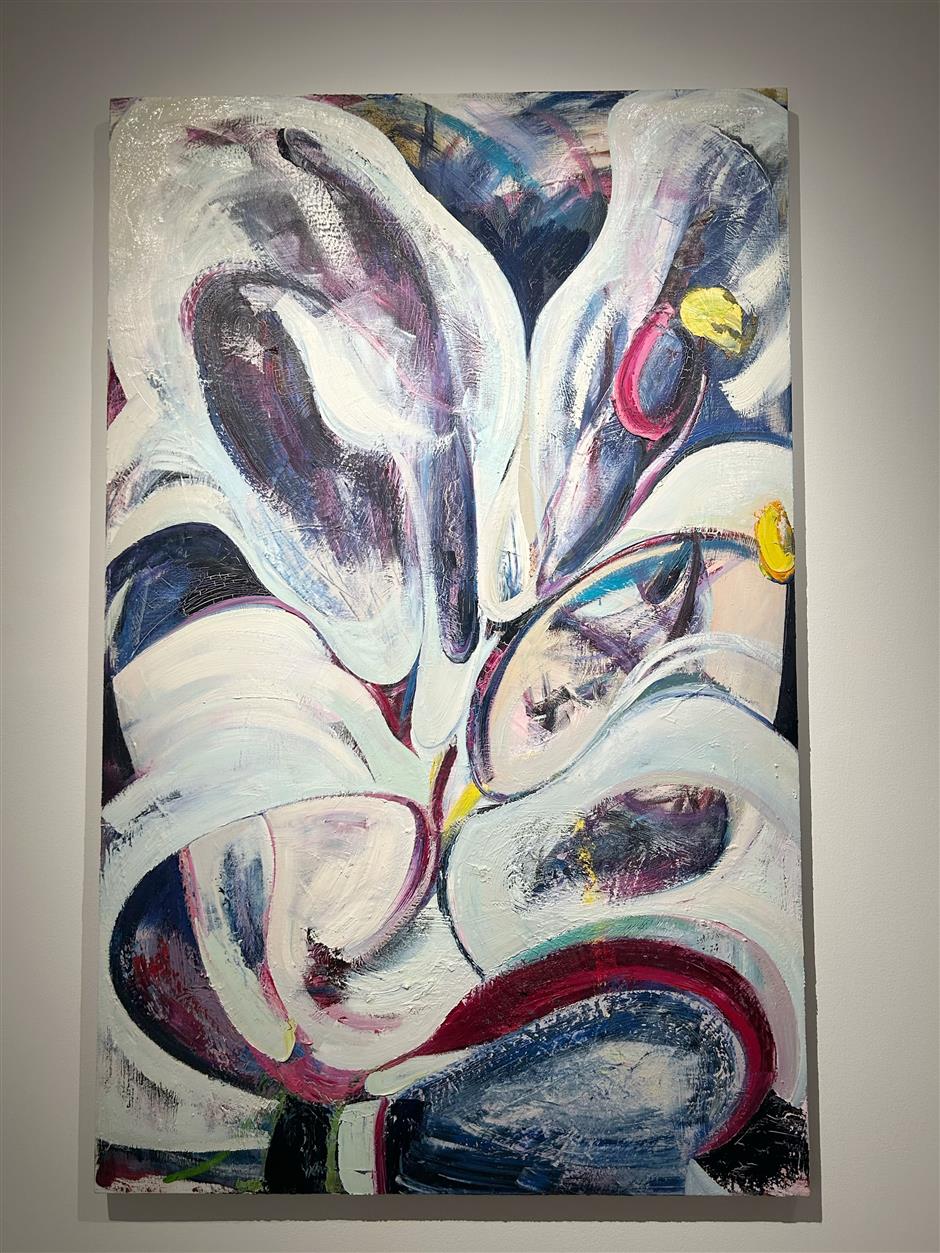
"Lily 05" by Zhang Zipiao, oil on canvas, 2020. Collection of Vivi Gan.
This exhibition explores each piece's conceptual core, including symbolic meaning, material qualities, creative techniques and underlying ideas, revealing art's deeper meaning. It promotes cultural, historical and socio-political exchange between Eastern and Western perspectives while addressing gender, ethnicity and community belonging.
Women artists and collectors are underrepresented in art history, and the exhibition aims to address this issue. The history of art would be incomplete without them. Restoring these voices enriches global art history.
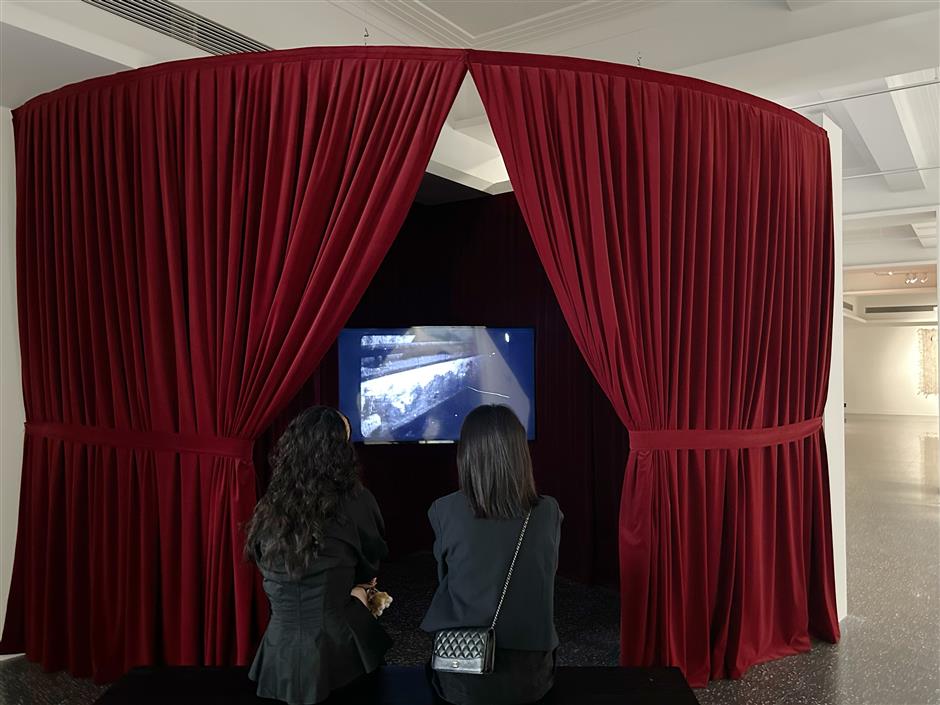
Two women watch a digital video work at the exhibition.
Li Weiyi's Ouroboros Necklace is a standout in the exhibition.
She said the jewelry included imitation pearls and a taxidermied black carp head.
"The necklace was supposed to be a pearl necklace I made for myself, tailored to the measurements of my own head and neck," Li said. "When I learned about this exhibition, I realized that the piece could perfectly fit its theme, so I added the fish's mouth. I purchased the mouth from a taxidermist I know.
"At first, I thought it would be fragile, but it turned out to be much tougher than expected – it even pierced my hand. But the mouth worked perfectly, allowing me to place the pearls inside one by one, naturally completing the loop of the necklace."
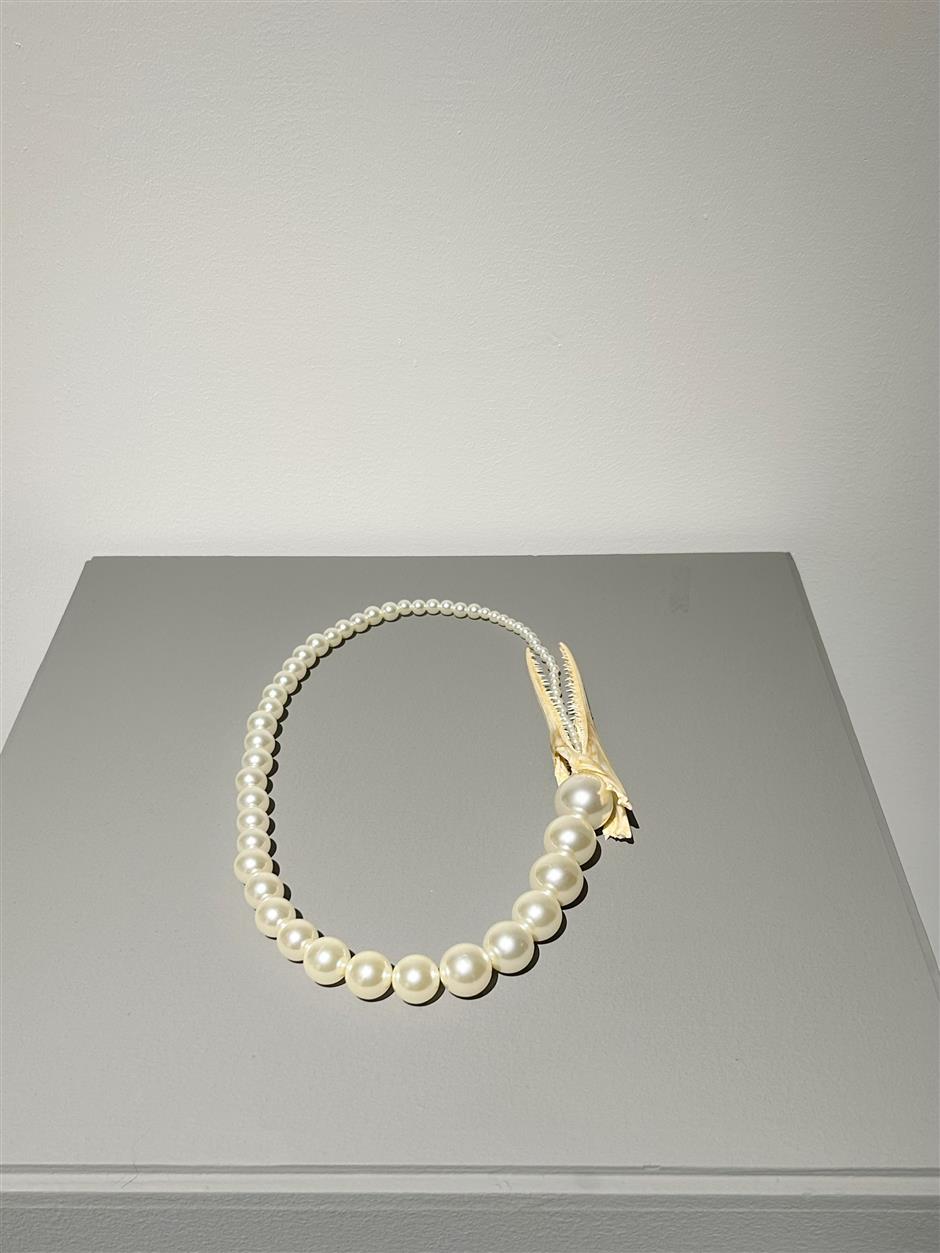
Ouroboros Necklace, designed by Li Weiyi
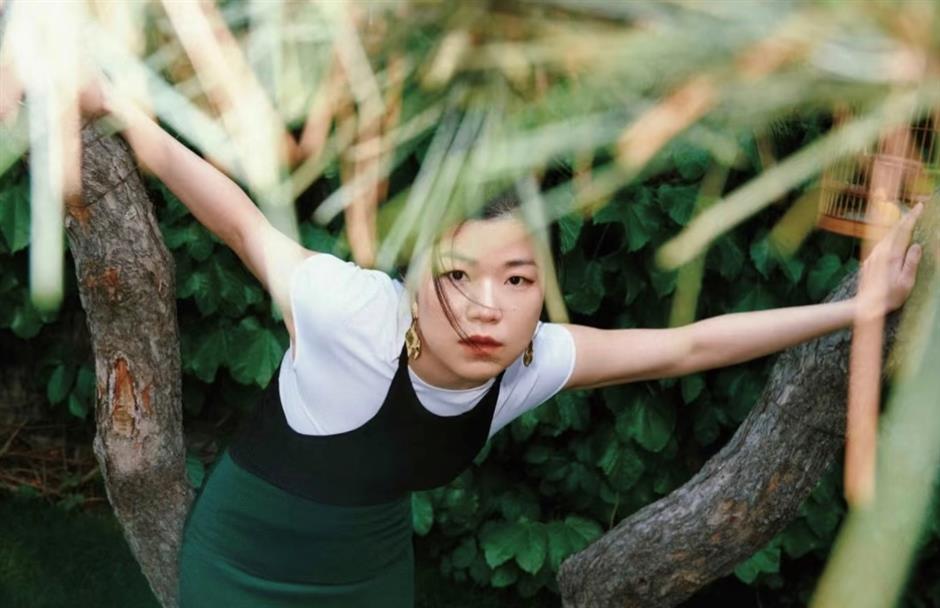
Li Weiyi photographed at Bazzzr New Art, 2024
In "The Transformation of Tradition," Spanish artist Sonia Navarro's STIRPA I employs dyed silk fabric and wooden frameworks to turn traditional Spanish sewing processes into installation art.
One of Spain's most famous contemporary artists, she has seen her sculptures acquired by the Museo Reina Sofía, Spain's top contemporary art museum, and even by the Spanish royal family as diplomatic presents for the Dutch royal family.
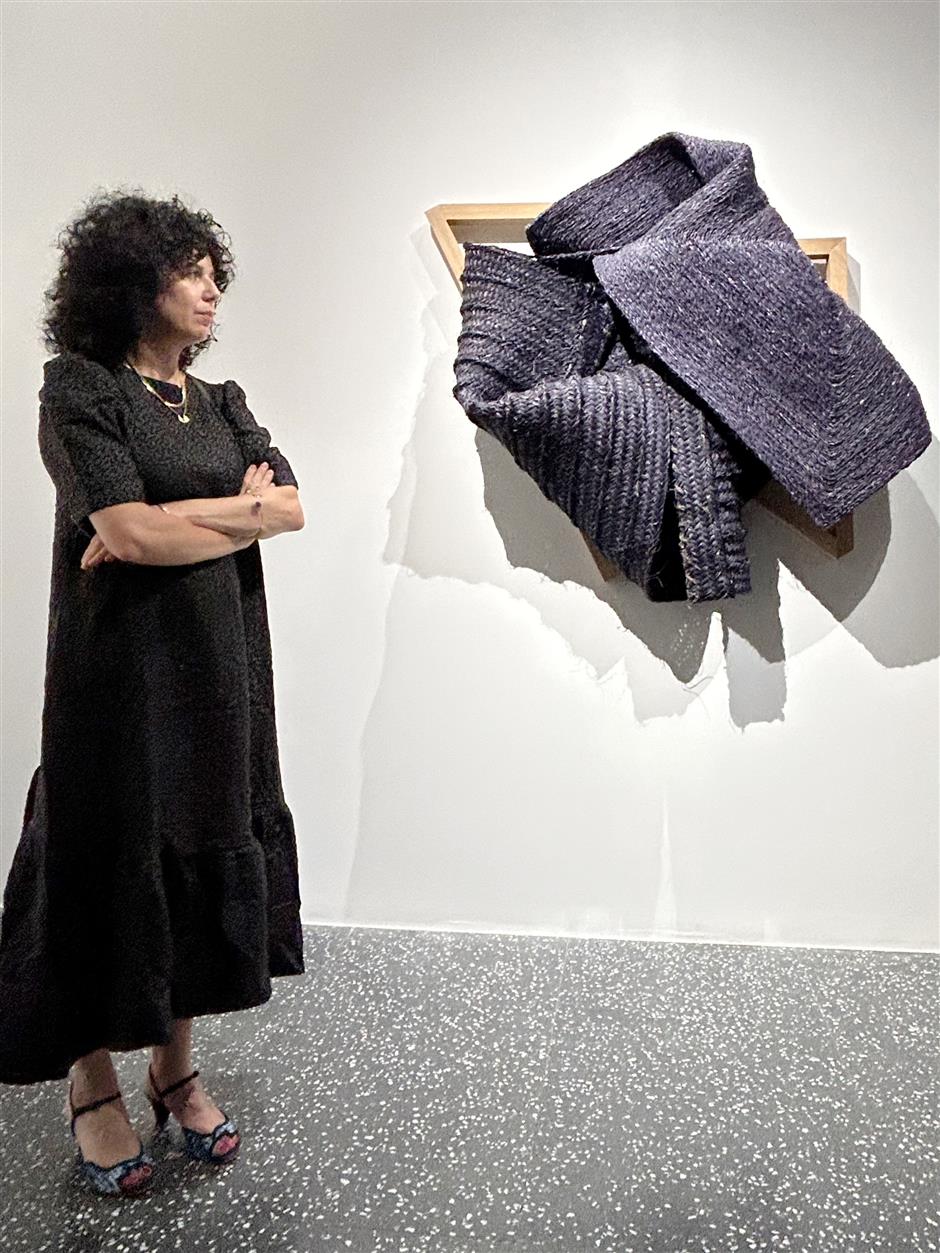
Sonia Navarro with her work STIRPA I
"This knitting technique is a cultural heritage passed down through generations of Spanish women," Navarro said.
"One of the meanings of my work in this exhibition is that, in fact, women all over the world are constantly weaving and using these fabrics, yet they've never realized that their handmade creations are also a form of art.
"They've never seen their work as something of real value, when in fact they are carrying on this tradition. I want to let it continue to breathe within contemporary art."
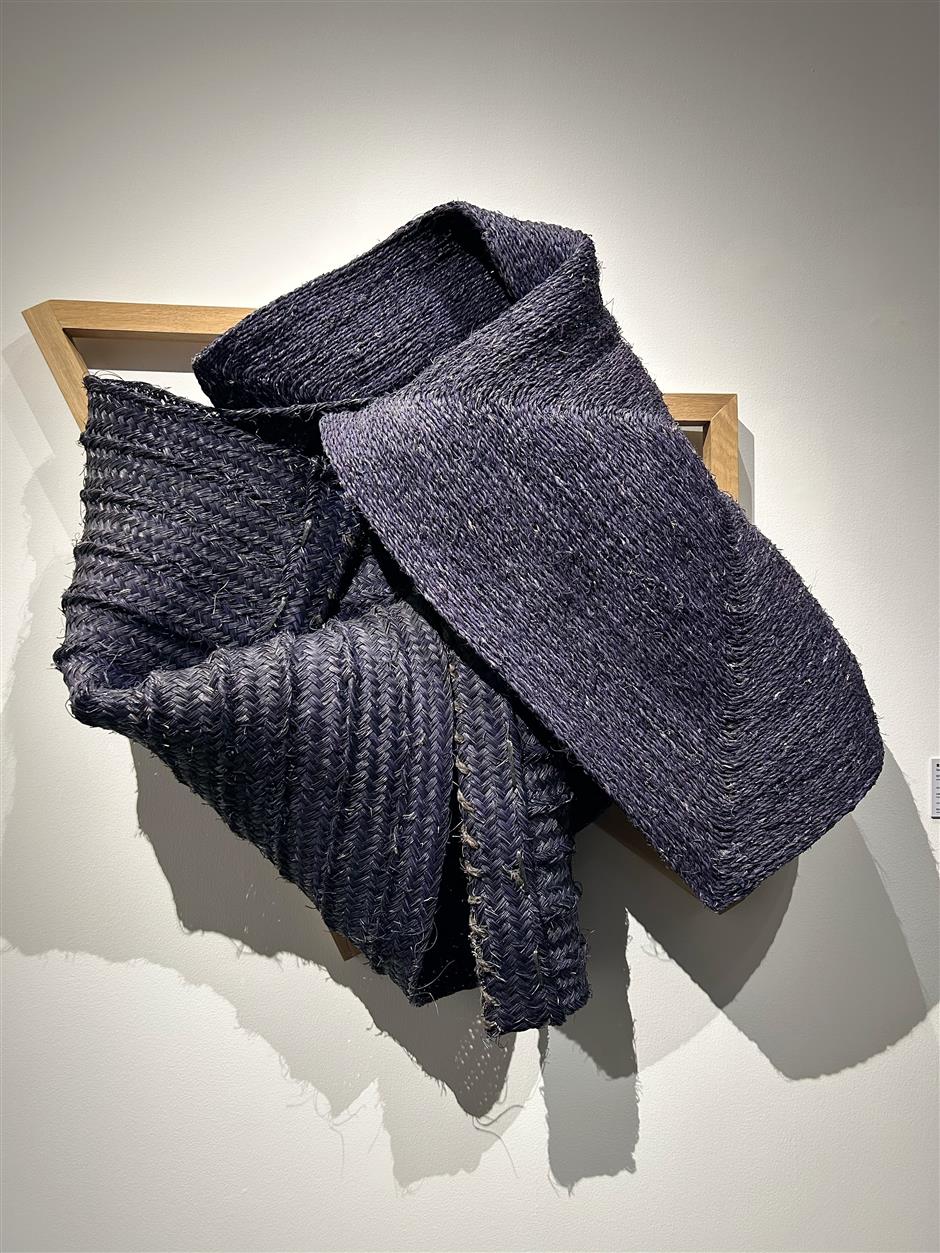
"STIRPA I," needle grass textile and wooden structure, 2021. Collection of Yera.
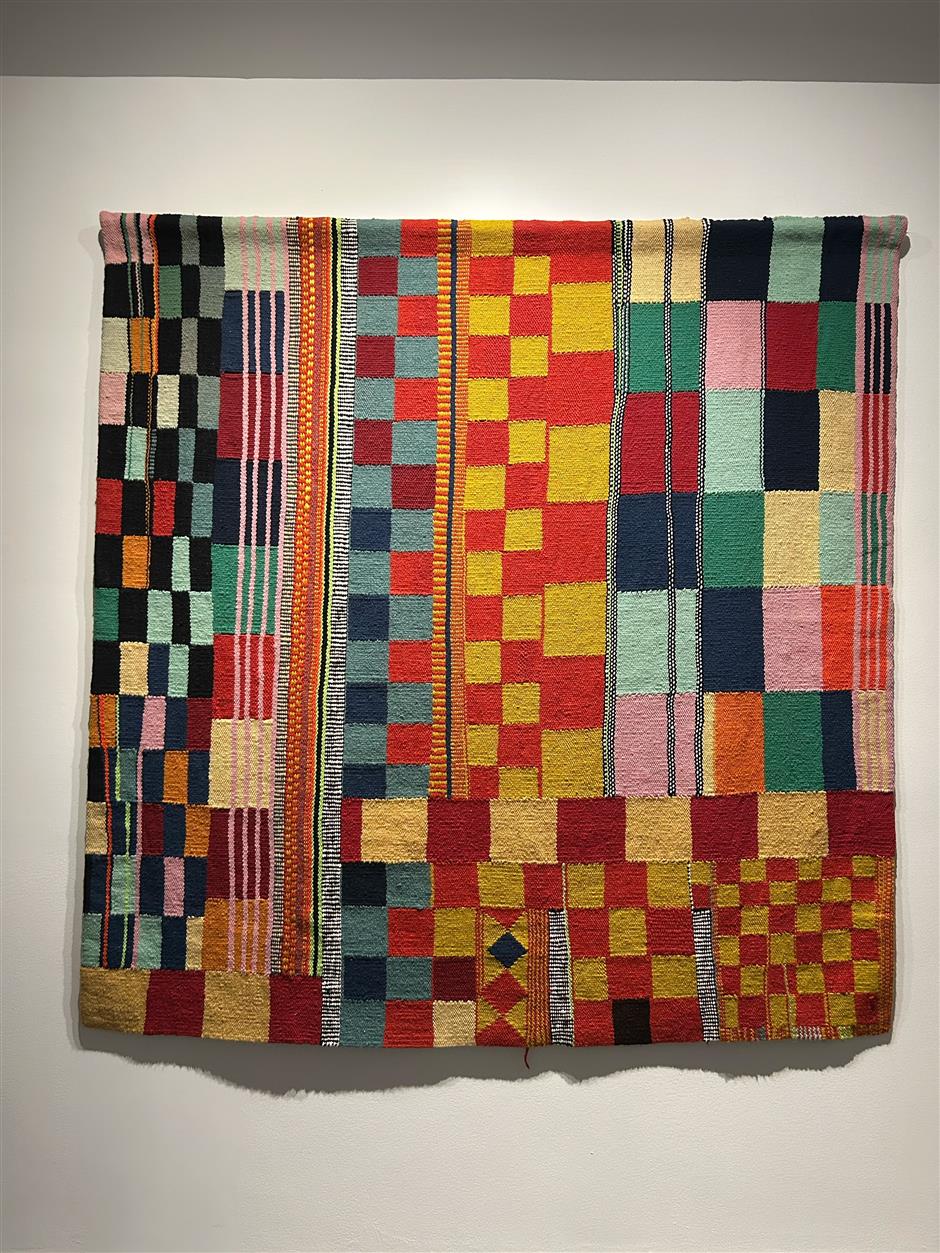
"Weaving Abstract (Yellow-Red)" by Teresa Lanceta, mixed media (cotton, wool, taffeta), 2000
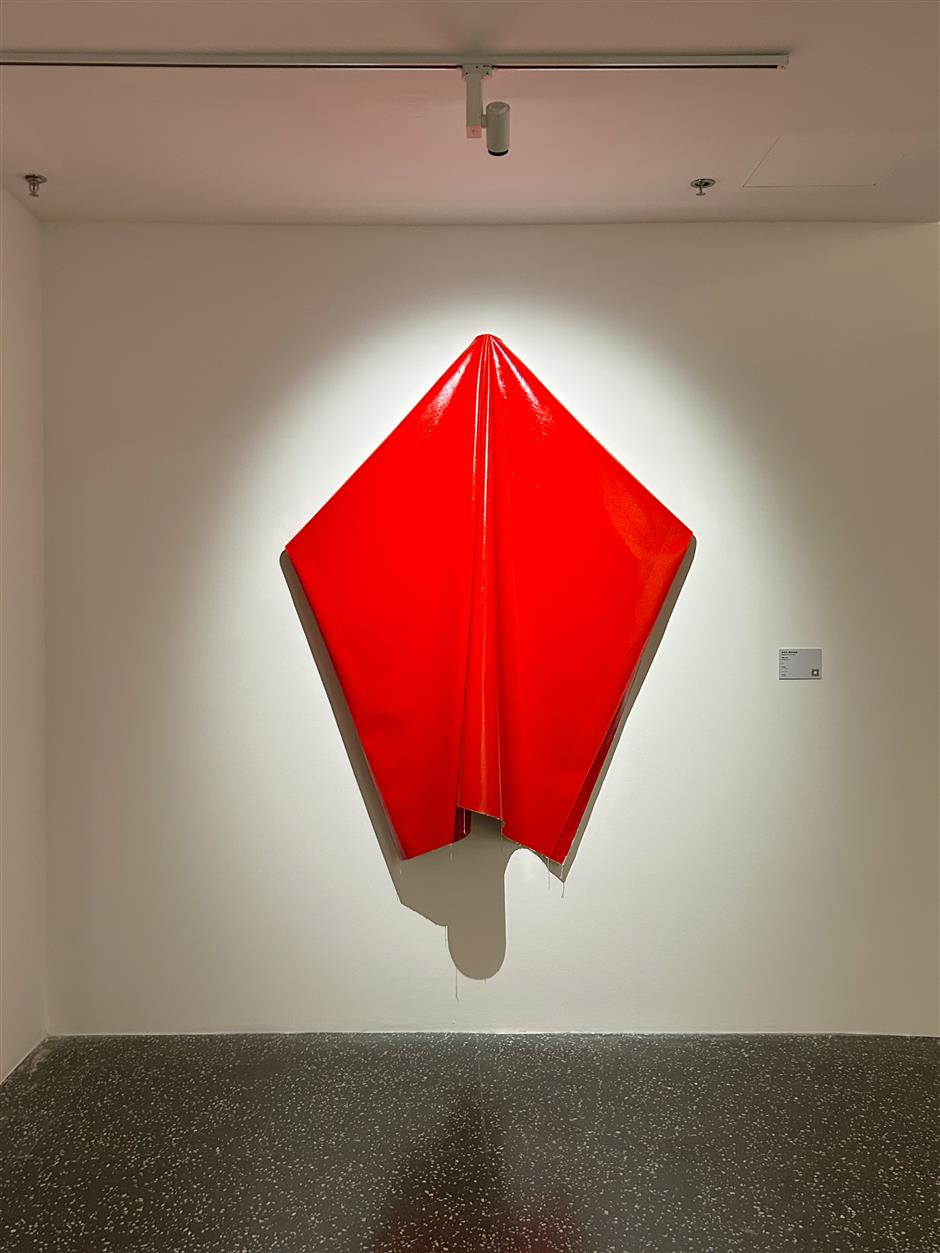
"Flat 13, Red" by Ángela de la Cruz, oil on fabric, 2010
Date: Through October 22, 10am-6pm (last entry at 5:30pm)
Venue: Shanghai Jiushi Art Museum
上海久事美术馆
Address: 6/F, 27 Zhongshan Rd E1
中山东一路27号6层
Admission: 58 yuan (US$8); 48 yuan for full-time students at undergraduate level or below, people with disabilities, and seniors aged 60 and above. Valid ID is required for entry after purchase.
